Spirited Away - Hero's Journey
Jacob Patroni
Created on October 25, 2023

More creations to inspire you
Let’s go to london.
Personalized
ENERGY KEY ACHIEVEMENTS
Cultural heritage and art key achievements, about the eea grants and norway, downfalll of arab rule in al-andalus, human and social development key.
Discover more incredible creations here
The Hero's Journey
Symbols or signs can be used to as short cuts to represent ideas or concepts. Symbolic aspects can include choice of casting, design of hair and make-up, choices of costume, props, and objects. It also includes icons. For example, the Eiffel Tower is a symbol often used to represent the city of Paris, heart symbols are used to represent love, and the colour red to symbolise danger, or perhaps romance, depending on the context. Symbols can also be used to present concepts, and information in diagrams, graphs, timelines, and other forms of visual information texts.
- Colour Symbolism
- Black: evil, menacing, rebellion, strength, mystery, secrets, depression, grief, night. Black is the colour of death and mourning in almost all western countries. Black is also used to denote sophistication, power, formality, authority, and style.
- White: light, purity, innocence, cleanliness, cold, ice, snow, sterility, new. Western brides wear white to symbolise chastity.
- Blue: peace, tranquillity, truth, dignity, power, melancholy, cold, sadness, honour, calmness, faithfulness, holiness, loyalty, wisdom, seclusion, loneliness, thinking, distance.
- Red: love, rage, fire, anger, heat, passion, warmth, urgency, blood, excitement, power, danger, warfare, hostility, appetite, health, courage, majesty, aggression. Red is often used as an accent colour to make things stand out.
- Yellow: happiness, sunshine, joy, cheerfulness, energy, warmth, hope, intelligence, logical thinking, innovation, spirituality, life. Dull yellow can signify cowardice, ruin, shame, illness, decadence (Zammitto, 2005).
- Green: nature, growth, fertility, durability, environment, freshness, relaxation, health, energy, new life, tranquillity, vegetation, money, and jealousy
- Purple: wealth, royalty, religion, holiness, power, grandeur, sophistication, intelligence.
- Brown: stability, natural, nature, wood, earth, soil, ground, earthy, reliable.
- Orange: warmth, strength, autumn, cheerful, stimulating, change, vitality, creativity.
- Grey: dull, plain, unassuming, neutrality, coolness.
Interaction
Students learn that authors of images make visual design choices to build relationships and interactions between the participants in the text. These text participants are: the author, the audience, and the subject/s (characters in a literary text, or the main things/objects in a factual text). The author also makes visual design choices to express knowledge, skills, trustworthiness, power and status, attitudes, feelings, and opinions. For example, the author makes visual design choices which can establish a particular attitude or point of view about the topic or subject and tries to align the audience with this position. For each question, ask students to expand on their responses by explaining reasons why, and encourage them to use evidence from the image to justify their responses. Teach/revise and continue to scaffold student use of visual design metalanguage as appropriate.
- Direct as viewer/reader [yourself];
- Indirectly, mediated through a character – either as character [first-person], or along with character, for example looking over a character's shoulder (Painter, Martin, Unsworth, 2013).
Subjects (people)
Social distance is the distance between the viewer/focaliser and subject. How close or far away is the subject shown? Social distance is measured on a continuum from extremely close, to extremely remote. This is based on how comfortable we generally feel with people being close to us, in real life situations. The following general discussion prompts are intended to develop student knowledge of these options for choice of social distance in an image or visual text, and the possible impact this might have the viewer, and the type of interaction created between the viewer and the subject. Students are encouraged to examine the choice of social distance between the viewer and the subject in each image, and to consider how each design choice affects viewer connection to, and alignment with characters.
Body Language/Facial Expression
Body language can provide insight into a characters thoughts, feelings, and actions Facial expressions tell us how the characters are feeling without them having to say it. Their expression is symbolic of their emotions.
Where is the subject looking and what significance does this have? Often a subject will look in the direction of something/someone that is important/significant to them.
Composition
- How is the image flow of information in the image organised?
- What do you notice first? How has the author drawn your attention to this part of the image? (Salience)
- How is your eye drawn from one point to another across the image? (Reading path)
- How is colour used to organise information, and to influence the layout of this image? (see colour in Expressing and developing ideas in images above)
- If you imagine the image to be divided equally into four quadrants, where is the main subject/s and the action placed in the text? For example, is this in the top or bottom of the image? On the left or right side? Or in the middle?
- Is there a frame around the image? How thick is the frame border? Is there a lot of white space on the page around the edges? Or is the image spread across two pages?
- How do these elements draw the image together as a cohesive whole?
- If you changed any of these aspects, how would that affect the meaning of this image?
Salience is how the viewer's eye is drawn to what is important in the image. An aspect of an image can be highlighted by placement in the foreground, size of the object, and contrast in tone or colour. (Also see colour above.) For example, what do you notice first in the image below from Into The Forest, by Anthony Browne? Here, the red hooded cloak draws our eye. The line of the trees leading towards the cottage with its open door then leads the eye along a reading path.
A vector shows action and direction in an image through lines. A vector can be a visible line, for example use of lines in the three examples of lines above to indicate direction. A vector can indicate movement in a still image, for example using arrows in a diagram (Example 1). Lines can also can indicate direction and movement in a still image. In Example 2, sets of lines indicate a dog is jumping and wagging its tail. Vectors can also be created using the line of a shadow or an object, subject gaze or eye line, or a pointing arm or finger.
Camera Angle
Different camera angles are used to emphasise/symbolise different things: Low Angle: The camera looks up at a subject. Used to make someone or something look powerful, intimidating or taller. High Angle: The camera looks down at a subject. Used to make the subject look small, vulnerable or powerless. Eye-Level: The camera meets the eye level of the subject. Used to make the subject appear as equal to the viewer. Bird's Eye View: The camera is positioned very high above, looking down on the scene. Can be used to show setting or positioning of characters.
The clothing (or costumes) worn can be symbolic of the character’s profession, state of mind, or personality.
Lighting can be symbolic of the events happening, and can be used to create mood. Brighter lighting can mean everything is well, and dark lighting can mean things are about to get worse. It can also draw our attention to someone/something specific.
Written Codes
Foreground, background
Visual Conventions List
In which the last test is met. Here is the true climax of the story. Everything that happened prior to this stage culminates in a crowning test for the Hero, as the Dark Side gets one last chance to triumph over the Hero. Vogler refers to this as a “final exam” for the Hero — they must be “tested once more to see if they have really learned the lessons of the Ordeal.” It’s in this Final Battle that the protagonist goes through one more “resurrection.” As a result, this is where you’ll get most of your miraculous near-death escapes, à la James Bond's dashing deliverances. If the Hero survives, they can start looking forward to a sweet ending.
- Theseus upon arriving in Athens.
- Odysseus setting off on his ship in The Odyssey.
- Dorothy when she’s swept up in a tornado in The Wizard of Oz.
- Elliot in E.T. upon discovering a lost alien in the tool shed.
A mentor figure gives the hero the tools and inspiration they need to accept the call to adventure.
Now the Hero is ready — and committed — to the journey. This marks the end of the Departure stage and is when the adventure really kicks into the next gear. As Vogler writes: “This is the moment that the balloon goes up, the ship sails, the romance begins, the wagon gets rolling.” From this point on, there’s no turning back.
In which the Hero faces new challenges and gets a squad. When we step into the Special World, we notice a definite shift. The Hero might be discombobulated by this unfamiliar reality and its new rules. This is generally one of the longest stages in the story, as our protagonist gets to grips with this new world This stage often expands the cast of characters. Once the protagonist is in the Special World, he will meet allies and enemies — or foes that turn out to be friends and vice versa. He will learn a new set of rules from them. Saloons and seedy bars are popular places for these transactions, as Vogler points out (so long as the Hero survives them).
In which the Hero gets closer to his goal. This isn’t a physical cave. Instead, the “inmost cave” refers to the most dangerous spot in the other realm — whether that’s the villain’s chambers, the lair of the fearsome dragon, or the Death Star. Almost always, it is where the ultimate goal of the quest is located. Note that the protagonist hasn’t entered the Inmost Cave just yet. This stage is all about the approach to it. It covers all the prepwork that's needed in order to defeat the villain.
In which the Hero faces his biggest test of all thus far. Of all the tests the Hero has faced, none have made them hit rock bottom — until now. Vogler describes this phase as a “black moment.” Campbell refers to it as the “belly of the whale.” Both indicate some grim news for the Hero. The protagonist must now confront their greatest fear. If they survive it, they will emerge transformed. This is a critical moment in the story, as Vogler explains that it will “inform every decision that the Hero makes from this point forward.” The Ordeal is sometimes not the climax of the story. There’s more to come. But you can think of it as the main event of the second act — the one in which the Hero actually earns the title of “Hero.”
In which the Hero sees light at the end of the tunnel. Our Hero’s been through a lot. However, the fruits of their labor are now at hand — if they can just reach out and grab them! The “reward” is the object or knowledge the Hero has fought throughout the entire journey to hold. Once the protagonist has it in their possession, it generally has greater ramifications for the story
In which the light at the end of the tunnel might be a little further than the Hero thought. The story's not over just yet, as this phase marks the beginning of Act Three. Now that he's seized the reward, the Hero tries to return to the Ordinary World, but more dangers (inconveniently) arise on the road back from the Inmost Cave. More precisely, the Hero must deal with the consequences and aftermath of the previous act: the dragon, enraged by the Hero who’s just stolen a treasure from under his nose, starts the hunt. Or perhaps the opposing army gathers to pursue the Hero across a crowded battlefield. All further obstacles for the Hero, who must face them down before they can return home.
In which our Hero has a triumphant homecoming. Finally, the Hero gets to return home. However, they go back a different person than when they started out: they’ve grown and matured as a result of the journey they’ve taken. But we’ve got to see them bring home the bacon, right? That’s why the protagonist must return with the “Elixir,” or the prize won during the journey, whether that’s an object or knowledge and insight gained. Of course, it’s possible for a story to end on an Elixir-less note — but then the Hero would be doomed to repeat the entire adventure. Example: An unexpected rewardRocky doesn’t win the fight — but he doesn’t care. He’s won back his confidence and beaten his mental demons. And he’s got Adrian, who tells him that she loves him.
The journey has yet to start. Before our Hero discovers a strange new world, we must first understand the status quo: their ordinary, mundane reality. It’s up to this opening leg to set the stage, introducing the Hero to readers. Importantly, it lets readers identify with the Hero as a “normal” person in a “normal” setting, before the journey begins.
Unwilling to step out of their comfort zone or face their fear, the hero initially hesitates to embark on this journey.
Spirited Away ideas
Greed turns people into monsters
- Banks were irresponsible with loans and most Japanese citizens were eager to receive them – so many people, who shouldn’t have been afforded loans, were given them.
- A ‘buying frenzy’ occurred where Japanese people bought land with loans, which could secure more loans to buy stocks and more land
- Exploitation of environment to mine natural resources (coal) and build infrastructure
- When people become fixated on wealth and profit, they become slaves to insatiable
We must protect and remain respectful of the environment
Chihiro first enters this magical world by crossing a dried-up river that divides the human realm from the fantastic. She crosses a literal threshold of natural destruction to embark on her journey. Two of Chihiro’s encounters in the film specifically speak to environmental concerns. The first appears when an enormous “stink spirit,” as it is thought to be, arrives at the bathhouse. The staff attempts to drive the huge beast away, but it forces itself into the building and is directed to the largest tub. As the stink spirit is bathing, Chihiro discovers something sticking out of its side and decides to pull, with the assistance of various bathhouse staff members and its ambiguously-natured proprietor, Yubaba (Mari Natsuki). What they discover is the being isn’t a stink monster at all, but a river spirit who was corrupted by the endless pollution of his river. As they tug on the protrusion sticking from his side, an endless stream of trash and filth pours from his murky core, containing everything from general garbage to car tires, and even a bicycle. After all the human trash was removed from his body, he was freed as a majestic dragon-like being and able to fly away. The stink spirit is an obvious allusion to man’s pollution of the environment. Miyazaki said the stink/river spirit was based on his own experiences cleaning a river, where he was part of a team that pulled tons of trash (including a bicycle) from a filthy riverbed. Since then, the river has remained clear and fish have returned. The character in the film not only displays the harmful consequences of human pollution, but also our capability to repair the damage we’ve done if we try. The second character in Chihiro’s story with environmental subtext is Haku (Miyu Irino). Part of Spirited Away’s mystique is related to nomenclature—employment at the bathhouse means you must give up your name and adopt a new one. Forgetting your old name means the loss of your past, and permanent residency in the mystic world of the spirit realm. Throughout the story, Haku has forgotten his original name and notes he’s spent ages trying to discover his origins. By the end, Chihiro figures it out—Haku is actually the spirit of the Kohaku River, a body of water destroyed in the name of human settlement. It is remarked that the river is “all apartments now,” identifying that Haku lost his home and identity due to human destruction of nature. He had nowhere to go, ended up at the bathhouse, and lost sight of his origins.
The path to maturation is forged through accepting responsibility
- Adaptability
- Bravery/Courage
- Persistence/Resilience
- Independence
- Compassion/Kindness to others
We must remember our past in order to navigate through the present
A major conflict of the film revolves around Chihiro and her endeavor to navigate the spirit world while remembering her past. Context In 2001, when Spirited Away was released, Japan was experiencing an identity crisis. Once a deeply spiritual and communal nation, Japan quickly industrialised and became a world economic leader. When the economy crashed in 1990, Miyazaki believed that the country underwent a cultural dilemma - where the traditional Shinto values had been neglected, yet the capitalist values of profit/greed had led to despair. In Spirited Away, Miyazaki suggests that in order to navigate through this period, Japanese society should revive the unique values and beliefs they once held. Heavily based on Shintoism, this meant placing more value on spirituality and community, which manifested in compassion to others and a respect for nature.
ORDINARY WORLD
This is the original world of the hero, which "suffers from a symbolic deficiency." The hero is lacking something, or something is taken from them. The journey has yet to start. Before our Hero discovers a strange new world, we must first understand the status quo: their ordinary, mundane reality.
1. What is happening in this scene? How does it resemble the 'Ordinary World'?
What is Chihiro lacking in the opening scene? How would you describe her relationship to the world around her?
2. What visual techniques do you see in the image and what is their effect?
Consider how visual conventions, such as symbols (objects - flowers/jewellery), gaze, facial expression/body language provide deeper insight into Chihiro and her parents
This bouquet was a gift from Chihiro's best friend in her old school. How is Chihiro's relationship with them reflective of her character?
CALL TO ADVENTRUE
1. What is happening in this scene. How does it reflect the 'Call to Adventure'?
Does Chihiro actively accept the call to adventure? What does this suggest about her character?
Think about things like proximity (how close the characters are to one another), extreme long-shot, objects (statue) and colour. How would you describe Chihiro's disposition in this scene? Is she eager to experience an adventure, or is she more tentative? EXTENDED What is the significance of the distancing between Chihiro and her parents? Who do these characters represent in Japanese society?
This is a Dosojin statue (from Shinto religion) They are often seen on entrance ways and borders to protect travelers and the local residents. The Jizō Statue is a special Dōsojin to protect children.
REFUSAL OF THE CALL
2. What visual techniques are usedin the image? What effect do they have?
Consider the gaze (where character's are looking), objects, facial expressions/body language, lighting, and focalisation (who's perspective are we adopting as viewers)
3. What larger connection can be made to issues here?
Consider who these characters may represent in a Japanese context.Remember, Miyazaki was critical of the modern Japanese values of profit, materialism and industrialisation.
1. What is happening in this scene?
Why is Chihiro not eating the food?
"Don't worry, your daddy's here. He has credit cards and cash."
MEETING THE MENTOR
The hero encounters a wise figure who prepares him for the journey. This figure (or item) gives advice, guidance, or an item, but cannot go with the hero.
1.What is happening in this scene? How does this scence reflect the 'Meeting the mentor?"
Describe Haku in this initial meeting. What qualities does he show? Why do you think Haku goes out of his way to help Chihiro?
2. What visual techniques do you see in the image? What effect do they have?
Consider the proximity, dialogue, colour, body language/facial expression of the image.
"Unless you eat some food from this world, you will vanish"
CROSSING THE THRESHOLD
1. What is happening in this scene? How does it reflect 'Crossing the Threshold'?
Consider the symbols (spirits, clothing, architecture), and how they combine to create a new setting. Also, think about the interaction of characters and what this suggests about Chihiro and Haku.
3. What larger connection can be made to theme here?
Crossing a bridge is symbolic of transition - is Chihiro beginning a journey of some kind? The setting is full of mystical spirits and foreign architecture - what similarities can be drawn to children entering the adult world?
The Onama-Sama are spirits that look similar to the Namahage. They are said to scare children into good behaviour.
Ancient Japanese architecture - reminiscent in colour and material to Torii gates, which symbolically mark the transition from the mundane to the sacred.
TESTS, ALLIES, ENEMIES
1. What happens in this scene? How does this reflect the 'Test, Allies, Enemies' of the Hero's Journey?
2. What visual techniques do you see in the image
Consider the objects, gaze, facial expression/body language, camera angle/shots of the image.
What qualities does Chihiro have to adopt in order to prove herself to Kamaji? Why would Miyazaki champion this quality? Do you think this is a heroic quality? How is Kamaji being portrayed in this image? Do you think this is a positive representation of work?
1. What happens in this scene? How does it reflect passing a test and gaining new allies?
2. What visual techniques do you see in the image and what effect do they have?
There are a lot of visual techniques here. Explain how these visual techniques portray Chihiro's character development.
How does Chihiro overcome this test? What qualities is Miyazaki championing in a hero? EXTENSION Why is the river spirit taking a grotesque form?What idea is being promoted in this scene? Is Miyazaki criticising something about modern Japanese culture?
1. What is happening in this scene?How does this scence reflect the 'Test, Allies, Enemies?'
Consider how other characters react to gold, food and materials in general. What does Chihiro do differently and why?
Who's point-of-view do we adopt and why?
What heroic quality does Chihiro display in her rejection of the gold? Why would Miyazaki champion this quality amidst 2000s Japan?
APPROACH THE INNERMOST CAVE
Innermost Cave In which the Hero gets closer to his goal. This isn’t a physical cave. Instead, the “inmost cave” refers to the most dangerous spot in the other realm — whether that’s the villain’s chambers, the lair of the fearsome dragon, or the Death Star. Almost always, it is where the ultimate goal of the quest is located. Note that the protagonist hasn’t entered the Inmost Cave just yet. This stage is all about the approach to it. It covers all the prepwork that's needed in order to defeat the villain.
1. What is happening in this scene? How does this scene reflect the "Innermost Cave"?
How is Chihiro entering the 'Innermost Cave'?
2. What visual techniques do you see in the image?
Explore the interaction between characters - how has their relationship changed? What symbolic importance do you think the shadowy figures have?
Consider the Japanese concept of 'Ma' - which is the idea of 'intentional emptiness.' Miyazaki justifies his use of Ma in the following statement: "f you just have non-stop action with no breathing space at all, it's just busyness, But if you take a moment, then the tension building in the film can grow into a wider dimension."
1. What happens in this scene? Why does itresemble 'the Ordeal'?
Why do you think it is difficult for Chihiro to remember elements of her identity?
Consider the interaction between characters and what this suggests.
Who does Chihiro represent in contextual sense? Why would this group of people have trouble understanding/remembering their identity? What is Miyazaki trying to say about the importance of identity?
"Now, try to remember as much as you can about your old life."
THE ROAD BACK
1. What happens in this scene? How does this scene reflect the "The Road Back"?
2. What visual techniques do you see in the image? What is their effect?
Consider the perspective we adopt, symbolic significance of pigs, facial expression/body language, camera shot/angle.
RESURRECTION
1. What happens in this scene? How does it resemble 'the Resurrection'?
What qualities does Chihiro exhibit in order to overcome her quest? Why would Miyazaki champion these qualities? What does he want his audience to take away from Chihiro's character development?
RETURN WITH THE ELIXIR
RETURN WITH THE ELIXIR The triumphant hero returns to the ordinary world bearing the elixir. Common elixirs are treasure, love, freedom, wisdom, or knowledge. A defeated hero is doomed to repeat the lesson.
1. What happens in this scene? How does it reflect the, 'Return with the Elixir'?
What new knowledge has Chihiro acquired over the course of her adventure?
Look at the facial expression and body language of Chihiro - does this suggest something sinister?
How does Chihiro develop over the course of the film?What does it mean to be a hero?
Father: "You know, it isn't easy moving to a new home, a new school. It is a bit scary."Chihiro: "I think I can handle it."
On Hayao Miyazaki's 'Spirited Away' and the Anxieties of Growing Up
'Spirited Away' is a manifestation of fears and anxieties as seen through the lens of its young lead female character, Chihiro.
The Big Picture
- Spirited Away is a coming-of-age film that explores the fears and anxieties of its young protagonist, Chihiro.
- The movie focuses on Chihiro's journey to save her parents and how it represents her transition into adulthood.
- Through symbolism and fantasy elements, the film tackles themes of identity, selflessness, and the fear of the unknown.
Hayao Miyazaki 's mystifying animated film Spirited Away made its debut over 20 years ago. Written by Miyazaki and inspired by the 10-year-old daughter of a close friend , Spirited Away follows Chihiro, voiced in the original Japanese by Rumi Hiiragi ( Netto Koshien ) and in English by Daveigh Chase ( Lilo & Stitch ), down the Japanese Shinto folklore spirit realm known as Kami. To save her parents from the powerful witch Yubaba, voiced by Mari Natsuki ( Nobuta o Produce ) and Suzanne Pleshette ( The Birds ), Chihiro will face more than any story's typical trials along the way: She will face herself.
Spirited Away
During her family's move to the suburbs, a sullen 10-year-old girl wanders into a world ruled by gods, witches and spirits, a world where humans are changed into beasts.
What Does the Symbolism in 'Spirited Away' Mean?
Spirited Away is a manifestation of fears and anxieties as seen through the lens of its young lead female characte r, Chihiro. How Chihiro chooses to react to the ever-changing circumstances around her, even the most horrifying ones, defines this film's central moral . It’s the terrifying fear any child could have, perhaps their biggest fear of all: being separated from her parents. However, it’s conquering that fear and finding her parents that spur Chihiro's journey into adulthood.
Disregarding Chihiro's warnings of eating food not meant for them, the powerful witch Yubaba punishes her parents by turning them into pigs . Chihiro must venture into the bathhouse and overcome the reality of this new child/adult role reversal to save them . She is not so much tested as she is provided the space to resolve her anxieties about moving to a strange new town. Mostly, it’s concerns of the unknown that prompt Chihiro’s journey and metamorphosis — personified by the aberration of finding herself trapped in a spiritual realm that could eventually keep her there forever.
'Spirited Away' Artfully Tackles a Child's Transition to Adulthood.
When Chihiro first works within the bathhouse under Yubaba to free her parents, she is overwhelmed with doubt . In some of the first few scenes, we see Chihiro trail after her parents, clutching her mother's arm with a firm grip in terror. In the end, it’s Chihiro who leads her parents out of the bathhouse, across the bridge, and back to the human world. The in-between, the journey there, makes Chihiro brave enough to cross that metaphorical bridge from childhood to adulthood .
With the help of Haku, voiced by Miyu Irino and Jason Marsden , Chihiro realizes that growing up is not about your age but about how you love, understand, and show compassion to others . Chihiro’s love for Haku is what saves them. She defies Yubaba, risking her own life, by returning the magical seal she stole from Yubaba's twin sister Zeniba, voiced by the same actress who voices Yubaba. Spirited Away anchors adulthood in Chihiro’s acts of selflessness. In doing so, she overpowers those same anxieties that once rendered her powerless to Yubaba.
Despite being an animated film centered around the practical issues of a young girl’s moral ethics and fears, Spirited Away isn’t afraid to use horror and fantasy elements to expand these issues. Likely, the most terrifying manifestation of these anxieties is the spirit of No-Face , voiced in Japanese by Akio Nakamura and English by Bob Bergen . No-Face is a multifaceted entity representing so much of Chihiro’s fears of abandonment, loneliness, and identity. It is, in its vacant form, and need of friendship, that No-Face mirrors Chihiro’s crisis. No-Face begins a rampage that consumes both food and people with the promise of unlimited gold as a symbolic parallel to Chihiro’s own need to feed her loneliness .
'Spirited Away's Audience Embraces Chihiro
While Chihiro rejects the boundless gold No-Face offers her, she expels the fear of being alone on a deeper level, of being unknown to herself and others. By the time the film ends, Chihiro not only saves her parents but gains a sense of selfhood and belief that wasn't there otherwise . Yubaba, herself a double as a twin, uses the threat of identity to control Chihiro and everyone who works at the bathhouse. As her last act of resistance and love, Chihiro gives Haku back his identity. Recapturing her and Haku’s identity from Yubaba becomes a symbol of autonomy and maturity that crystallizes Chihiro’s turn into adulthood, a release from both Yubaba and Chihiro’s fears.
What drives Spirited Away is not just the fantastical nature of the narrative but also wanting Chihiro to triumph despite her circumstances. Her resilience is the true driving force behind the film that has withstood the test of time. People go back to this film because it takes them back to their childhoods, where the anxieties of being unloved, abandoned, judged, and criticized were always present. Chihiro is not that different from the child everyone once was. As the weight of Chihiro’s ever-changing world festers her anxieties, audiences are invited to that feeling through the nature of their own world . They feel comforted in Chihiro’s triumphant final moments, as she crosses the bridge and never looks back.
Spirited Away is currently streaming on Max in the U.S.
Watch on Max
Uplifting the unheard and underrepresented voices of the film community
Suggestions, into the great unknown: the infinite wisdom of chihiro’s train journey in “spirited away”.
The climactic journey of 'Spirited Away' holds the key to understanding the ethos behind Hayao Miyazaki's entire filmography.
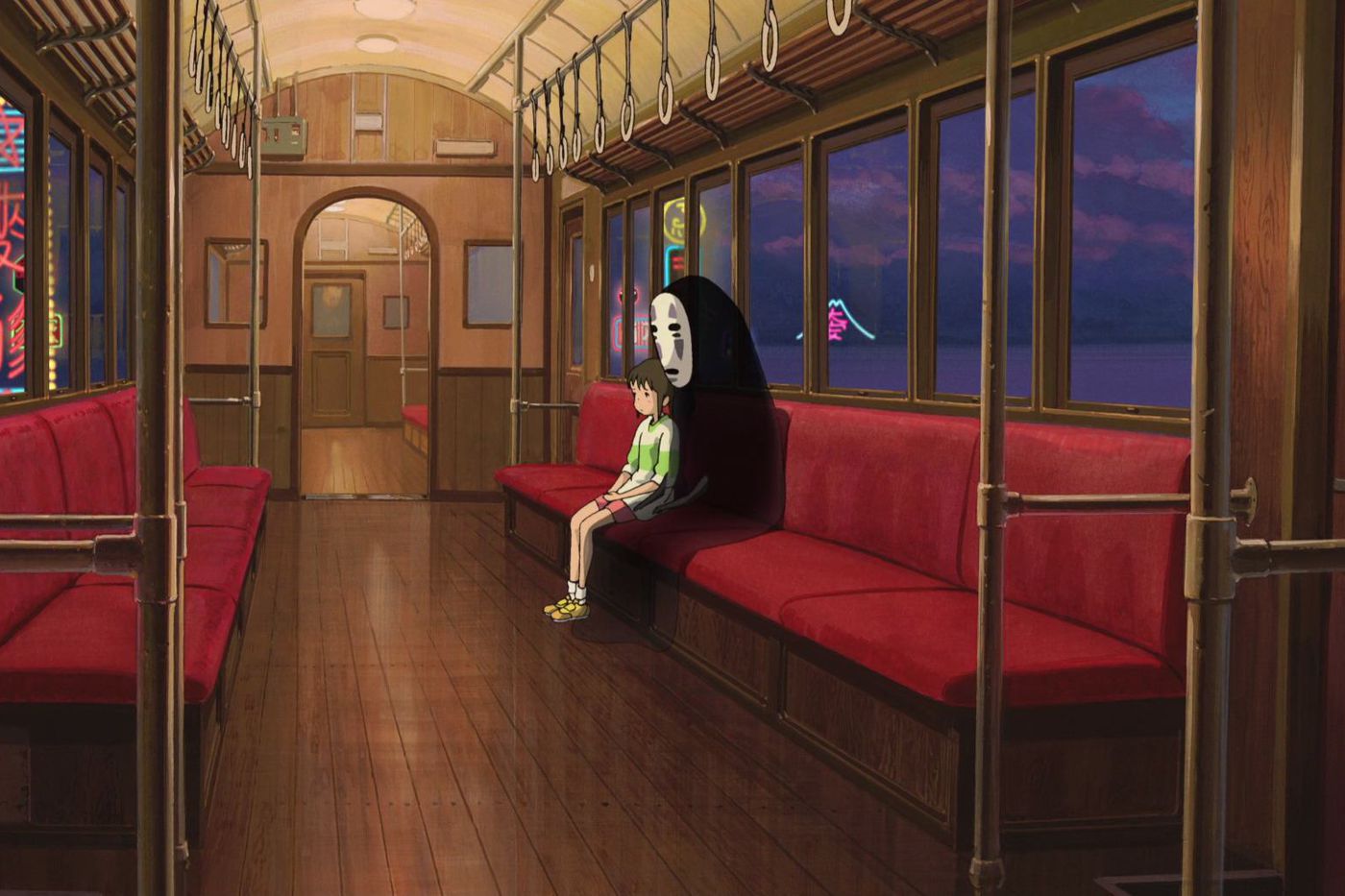
Hayao Miyazaki has always been fascinated with the idea of youth. It’s not just because he primarily makes films for children—his affection for the imagination and innocence of our childhoods informs his entire career, every one of his films reflecting upon the joy that stems from the freedom of being young and the sadness that comes with losing that. No film captures that more than Spirited Away , his 2001 magnum opus that uses a young girl’s existential journey through a land of spirits as an examination of finding yourself in your youth. While the film as a whole is a stirring pursuit of that idea, there’s one scene that alone unlocks the secret to Spirited Away —and perhaps Miyazaki’s entire filmography.
Near the conclusion of the film, the film’s protagonist Chihiro/Sen takes a trip to the countryside of the spirit realm in a scene that stands out as some of the emotionally striking filmmaking ever committed to celluloid. She boards a train, full of featureless spirits, that takes her across endless expanses of flooded villages and ghostly cities. There is no dialogue, only the sounds of Joe Hisaishi’s haunting score, the sweeping sounds of the ocean, and the relentless chugging of the train’s engine. A deep sense of sadness hangs heavy in the air, Chihiro watching wordlessly as her mysterious fellow passengers disembark for places unknown. In a particularly haunting moment, the train pulls away from a station and Miyazaki focuses on the spirit of a solitary young girl, probably Chihiro’s own age, watching it depart. Are these the spirits of the dead, traveling to a newfound home in the afterlife to reunite with their loved ones? Or are they weary, lost travelers, doomed to years of traveling with no set destination? Miyazaki knows he can’t offer any answers. He instead focuses on Chihiro’s face, which for the first time in the film is set with a sense of determination.
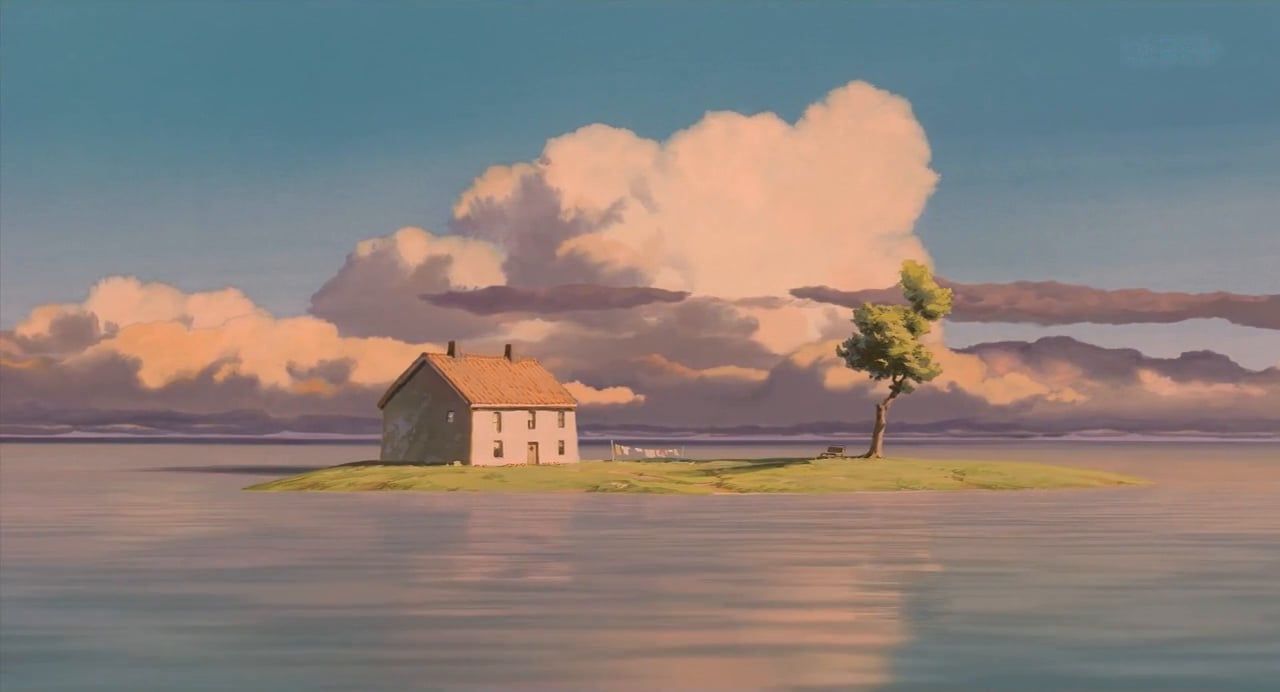
He shows a young girl on a metaphorical, and in some ways literal, journey from the naivete of her childhood to a deeper, more mature understanding of what it means to live for something. Chihiro is perhaps Miyazaki’s most complex character because she isn’t a joyful, mostly carefree child like the many Ghibli protagonists that preceded her. She spends much of the film nervous and unsure of herself, seemingly longing for the confidence of her much more easy-going parents. Her experiences in the spirit realm and her eventual evolution into maturity that the train journey represents form the very backbone of the bittersweet nature behind Miyazaki’s work. He longs for the privilege of childhood, the point in our lives where we are supposed to be unburdened by the worries of the world. But through Chihiro, he recognizes that a sense of freedom isn’t a guarantee and that it’s up to all of us to allow children the space to discover that freedom within themselves. Chihiro’s success in saving her parents and the reclamation of her identity hinges on the determination she discovers within herself in this scene.
Miyazaki’s protagonists in earlier films, particularly My Neighbor Totoro and Kiki’s Delivery Service , do face similar struggles over their freedom to be themselves; the merry adventures of Satsuki and Mei’s childhood in Totoro are complicated by the sickness of their mother and Kiki’s loneliness and lack of purpose drives the moral center of Delivery Service. The difference is that the train sequence in Spirited Away takes Chihiro’s emotional development a step further in that Miyazaki isn’t just speaking to children with this moment, he’s speaking to all audiences. As a child, you watch this moment and say “I know there is something in me that’s stronger.” As an adult, you watch it and are flushed with all the memories of the ebbs and flows of your life. You remember the times you had that same childhood realization, but you also resonate with the sense that something has been lost as you grow older. The faceless spirits mirror our own doubts over the anxiety and mundanity of being an adult, as well as the losses we’ve encountered in that growth, but the serenity in the scene also suggests that Miyazaki pleads that we must make peace with that development.
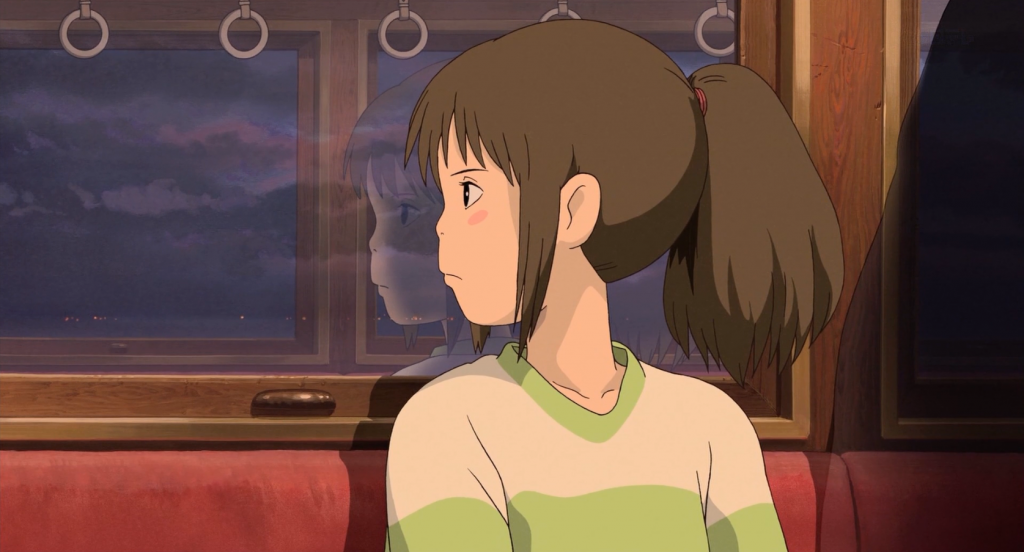
From a stylistic and structural sense, the scene is so potent because it’s a climax that is not climactic in the traditional sense of the word. It doesn’t land as the structural apex of the movie because it’s a bombastic set piece or a moment to unveil an earth-shattering revelation; it strikes such a chord because it actively challenges that notion of what a climax is, coming immediately after arguably the most action-packed scene of the film (No-face’s rampage through the bathhouse) and even standing in opposition to many of the pivotal moments of Miyazaki’s other films. In Miyazaki’s previous films, the emotional catharsis of those works still come in fast-paced, “epic” moments: Totoro’s themes of childhood bonds and trauma are crystallized in a journey on a cat-shaped bus, Princess Mononoke’s themes of environmental justice and lost innocence is made shockingly literal in a battle scene, and so on. In stark contrast, the train scene grinds Spirited Away’s propulsive momentum to a near halt to force viewers to linger on the transformation that Chihiro is undergoing and reflect on that change in our own pasts. The emotional challenge of hinging Chihiro’s catharsis around a scene this reserved is so great that Miyazaki arguably shied away from it for over a decade. Howl’s Moving Castle and Ponyo are fantastic films that nevertheless take a step away from the philosophical intricacy of Spirited Away. Miyazaki’s more spiritual sense would return with The Wind Rises , another masterful film that shares more threads with Away than you may spot at first glance. The climactic scene of that film can be seen as a moment in the vein of Miyazaki’s more electrifying work that’s complicated by the same quiet grace as Chihiro’s train ride: the protagonist Jiro finally achieves his dream of building the perfect plane, but feels a gust of wind at the test site that signifies the death of his wife Naoko. The triumph of his success is animated with only the sound of the wind and another poignant score from Hisaishi hanging over the scene, the juxtaposition of Naoko’s death and the eventual use of his planes for war illustrating that Jiro’s creative life has been corrupted by forces outside of his control. The mirrored styles of the two scenes and Miyazaki’s decision to return to that method of filmmaking for The Wind Rises reflects on the importance of Spirited Away not only as a tool to understanding Miyazaki’s wider career but as a work that shades Miyazaki’s own thought process even over a decade later. He is confident and wise enough as a director to recognize that his audience, specifically children, don’t have to be taken on a thrill ride for the purpose of the film to connect with them emotionally or spiritually, especially when dealing with themes that he feels would be betrayed by flashier filmmaking.
Chihiro’s train ride brings out the ideology and motivations behind Miyazaki’s sense of duty as a filmmaker with reserved grace. It exposes and continues to inform the ethos of his work, the theme that all his central ideas eventually return to in some way: aging is an inevitable loss, but it is not the end. Aging gives us the agency to discover ourselves, to remember the carelessness of our youth and cherish not only that memory of our past but who we’ve become since. That ideal shines new light on all of Miyazaki’s works, providing an answer to the question of what comes after the joys of childhood that he illuminates in them. As Chihiro’s train leaves her into a dark and uncertain night, Miyazaki reassures us that its journey is not over. It has more of us to shepherd, and the growth that spiritual migration invokes just means we are all strong enough to grow.
- hayao miyazaki
- spirited away
- studio ghibli
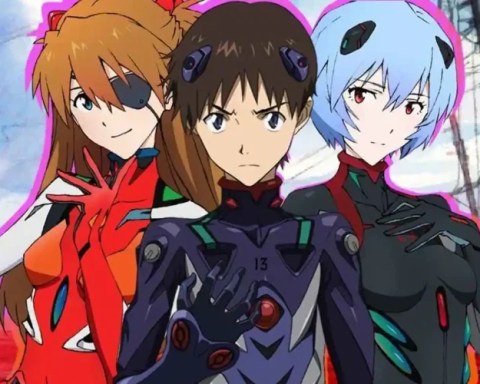
Hideaki Anno’s ‘Evangelion’: Reinvention Ad Absurdum
There is no greater perfectionist in the world of film than Hideaki Anno. In revisions, 'Evangelion' evolved to become the seminal work it’s known…

‘Princess Mononoke’: A Timeless Tale of Colonization and Indigenous Survival
November is Indigenous People’s Month in the United States; then and always, Studio Ghibli’s 1997 epic historical fantasy offers a poignant exploration of colonization,…
Ryan Ninesling
Thanks for such a poignant analysis of this beautiful film.
Leave a Comment Cancel reply
This site uses Akismet to reduce spam. Learn how your comment data is processed .
Discover more from Film Daze
Subscribe now to keep reading and get access to the full archive.
Continue reading
Movie Reviews
Tv/streaming, collections, great movies, chaz's journal, contributors, chihiro's journey: analyzing "spirited away".

In July 2012, Roger wrote about viewing “ Spirited Away ” for a third time and how he was then “ struck by a quality between generosity and love. ” It was during that viewing he “ began to focus on the elements in the picture that didn’t need to be there. ” Recently, I was re-reading that essay as I was watching the Blu-ray of "Spirited Away" three times (Japanese, English dub and back to Japanese) back-to-back-to-back.
Suddenly, I was struck by the visual cues Hayao Miyazaki presents in the beginning of the film that set up the character of Chihiro before she becomes Sen. I called it my A-ha moment.
Chihiro has been characterized as whiny, but I think if you understand her situation and contrast her intuitiveness with her parents' obliviousness, she seems less so. In the real world before she becomes Sen, there is no doubt she is a bit sullen. Not unlike Riley in Pixar's " Inside Out ," she's unhappy with being forced to move away from her friends. Her friends have given her a nice bouquet. If there are five stages of loss and grief (denial/isolation, anger, bargaining, depression and acceptance), then Chihiro is at the end of denial, and her comment about how unfortunate it is to get her first bouquet as a farewell gift indicates she is entering anger.

When her father, Akio, takes the rural street that leads them to what looks like an old unused amusement park, Chihiro picks up cues that her parents do not. She's troubled and a bit frightened by the moss-covered stone statues. Something about them makes her anxious. In this respect, she is not unlike Lucy Pevensie from "The Chronicles of Narnia." Narnia is closed off from children when they reach a certain age in the real world (until death returns Lucy, Edmund, Peter, Digory and Polly). Lucy is the most intuitive of the four Pevensies although she too has a moment of envy that signals she won't be able to return. Chihiro at ten is still more child than adult and thus more intuitive than her parents.
If we consider that Chihiro senses something is wrong, then her pleading with her parents not to enter the tunnel seem less whiny. She becomes Cassandra, a prophet whose warnings go unheeded. Out on the other side, there is a grass meadow and more stone statues. Chihiro's anxiety over the statues isn't the last bit of foreshadowing that Miyazaki provides visually.
In the following scenes, Miyazaki exploits the visual nature of the Japanese language. Japanese is not like English. Instead of an alphabet, it uses two syllabary systems and Chinese characters. The syllabary systems, hiragana and katakana, originated from Chinese characters, but are used to represent syllables. Hiragana is used for post-positionals and parts of words not fully expressed by Chinese characters (such as inflections for verbs and adjectives). Katakana is used for foreign words and onomatopoeia. Chinese characters often symbolize concrete things. Japanese poetry is filled with wordplay and the following scenes are filled with visual cues and words that can have double meanings.

On the first building we see an incomplete phrase. Alone the character 正 would be read "sho" or "sei" and means right, righteous, justice and genuine, but 正 also suggests 正しい, meaning correct, right, honest and truthful. There's more signs on the shops in the main road. At first casual glance as we go by, it does seem like they are all part of advertising for restaurants, but on closer examination, that proves not to be true.

When we get to the main street we see the characters 市場 for market (ichiba) and the word 自由 (jiyuu) for freedom. Then there are some disquieting Chinese characters. The mother says that all the places are restaurants. When you see 天 float by you might think 天ぷら (for tempura), but actually the characters are: 天祖 (tensoo) for the ancestral goddess of the sun, Amaterasu. In one frame we see only 天狗 (tengu), with "ten" above and "gu" below. The character 狗 means dog, but can be used for dog meat (狗肉)which is not commonly eaten in Japan (and could suggest the homophone 苦肉 or "kuniku," which literally means bitter meat meaning a countermeasure that requires personal sacrifice. The character usually used for dog is 犬. Tengu, however, or heavenly dog, a legendary creature or supernatural being (yookai) that can be either harbingers of war or protective spirits of the mountains and forests.
Floating at the corner of one building is 骨 which means bone and it could be a restaurant term as in the creamy broth: 豚骨 (tonkotsu) which is literally pig bone. Yet bone or "hone" is used in idiomatic phrases such as hone-nashi meaning to lack moral backbone.

Some of the Chinese characters are just a little off, enough to make you think. Most obviously is the one syllabary and one Chinese character that are written backwards when we look above at the arch. The characters are 飢と食と会 which seem to substitute for 飢える (ueru, to starve), 食べる(taberu, to eat) and 会う(au, to meet). The と signifies "and." It should read eat ( 食べる), drink (飲む) and meet (会う) or something like that, but the last two symbols are backwards on either side. Looking at these, perhaps Chihiro senses something is wrong.

Further, right before the father Akio turns down a small alleyway, he is framed by the characters for heaven on the left side of the screen and on the right side for devil. Soon after, what he sees is, especially in Japan, a supernaturally large buffet. While he assures Chihiro that he can pay for the feast and we remember he did have that foreign car, a Japanese person might be quickly calculating in their minds the exorbitant cost.

Chihiro briefly leaves her parents and above her head flashes a sign that reminds us both of family, pigs and death. The character 冢 (tsuka) means hill or mound. Yet this is not the preferred character which would be 塚 (also read tsuka). The small cross represents ground or earth. Without that radical, 冢 is only one stroke different than the word for house 家 (uchi) which is the same one used for the Chinese character combination that means family 家族 (kazoku). The significance here is that pig (豚 or buta) under a roof represents house/home 家. That quick flash of this character gives the suggestion of pig and family. Yet it is also like bone (骨 or hone) associated with death as in grave (冢穴).
This character 冢 (tsuka) seems to foreshadow the transformation of her parents into pigs and her journey to figure out how to save her parents from death. The more she sees of this amusement park, the more frightened she becomes. There's an expensive public bathhouse at the end of the pathway and all the lamps seems to be associated with it, but where are the people? Where are the vacationers, the retired old people and the middle-aged women on retreat? Where are the vendors, pushing you to buy anything and everything because everyone must return home with presents (omiyage) for their neighbors, co-workers and relatives. Anyone who has been on the trail to great temples or been on a hot springs tour will know that for such a grand feast and for such a splendid public bathhouse, these scenes are much too quiet.
Chihiro runs back, perhaps to warn her parents only to find her parents have been transformed into hogs.
The movie is called "Sen to Chihiro no Kamikakushi" (千と千尋の神隠し). Sen means a thousand, but the pronunciation of the character can change to "chi" as it does in the name Chihiro. The "hiro" in Chihiro means to ask questions. Kamikakushi means spirited away with kami meaning spirit or god and kakushi meaning hidden. So perhaps we can translate the title as "Sen and the Mysterious Disappearance of Chihiro."
"Spirited Away" was released in in July 2001. Most Studio Ghibli movies were released in July, and in Japan, I feel this is especially significant in the case of "Spirited Away" and " When Marnie Was There " because it is the Obon season, a time when Japanese believe the spirits of their ancestors walk the earth and return to their furusato (hometown). That time period (mid-July to August) is, much like New Year's week, a hard time to get things done in Japan due to the various celebrations and the people who leave on vacation. We do learn later in the movie that the character on the first building, 正, is part of a combination 正月 which we translate to mean New Year.
Although Roger didn't read or speak Japanese, he saw the rich detail. This is one of those movies worthy of a frame-by-frame analysis. For the people who read Japanese, some of what I have written above may have been intuitively realized. There are other things I still wonder about such as the prominence of the Japanese syllables of “me” and “yu” throughout. I’ve read one theory that put together into “yume” it means “dream.” I’d enjoy hearing other people’s thoughts, theories and feelings about “Spirited Away.”

Jana Monji, made in San Diego, California, lost in Japan several times, has written about theater and movies for the LA Weekly , LA Times , and currently, Examiner.com and the Pasadena Weekly . Her short fiction has been published in the Asian American Literary Review .
Latest blog posts

Second Sight Drops 4K Releases for Excellent Films by Brandon Cronenberg, Jeremy Saulnier, and Alexandre Aja

Wagner Moura Is Still Holding On To Hope

A Plea for Someone to Save Megalopolis

The End of the World is Going to be Weird on Prime Video’s Quirky, Clever Adaptation of Fallout
Latest reviews.

Challengers
Matt zoller seitz.

Disappear Completely
Brian tallerico.


LaRoy, Texas
Robert daniels.

The Long Game

Sasquatch Sunset
Monica castillo.

Simon Abrams
ThinkWritten
The Hero’s Journey: A 17 Step Story Structure Beat Sheet
The Hero’s Journey is a classic plot structure made up of 17 steps. Learn how to craft an epic story using the Hero’s Journey story beats.

We may receive a commission when you make a purchase from one of our links for products and services we recommend. As an Amazon Associate we earn from qualifying purchases. Thank you for support!
Sharing is caring!
The Hero’s Journey is a story structure that tells how a hero starts in one place, goes on an adventure into an unknown world, and then returns to what they started with.
This blog post will explain the 17 steps of the Hero’s Journey and share how you can use this common plot structure to write your own story or novel.
What is the Hero’s Journey?
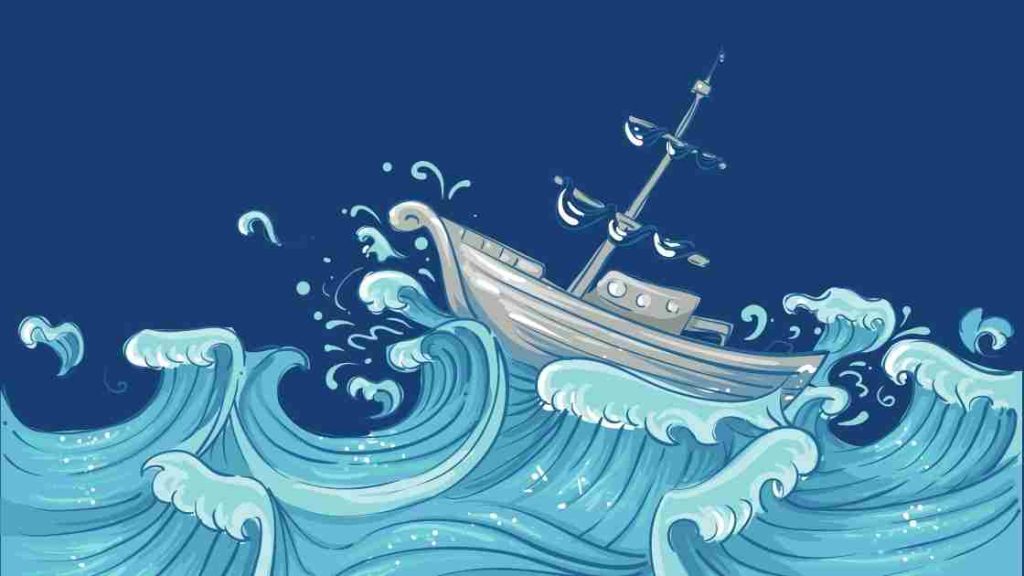
Joseph Campbell first introduced the Hero’s Journey in 1949. It is based on the idea that we can break down most stories into one basic story structure.
The plot structure of the Hero’s Journey is made up of 17 steps, all of which can be excellent guideposts for you when plotting your novel and planning your chapters.
To simplify the 17 steps of the Hero’s Journey, there are 3 main acts of the story: The Departure, The Initiation, and The Return.
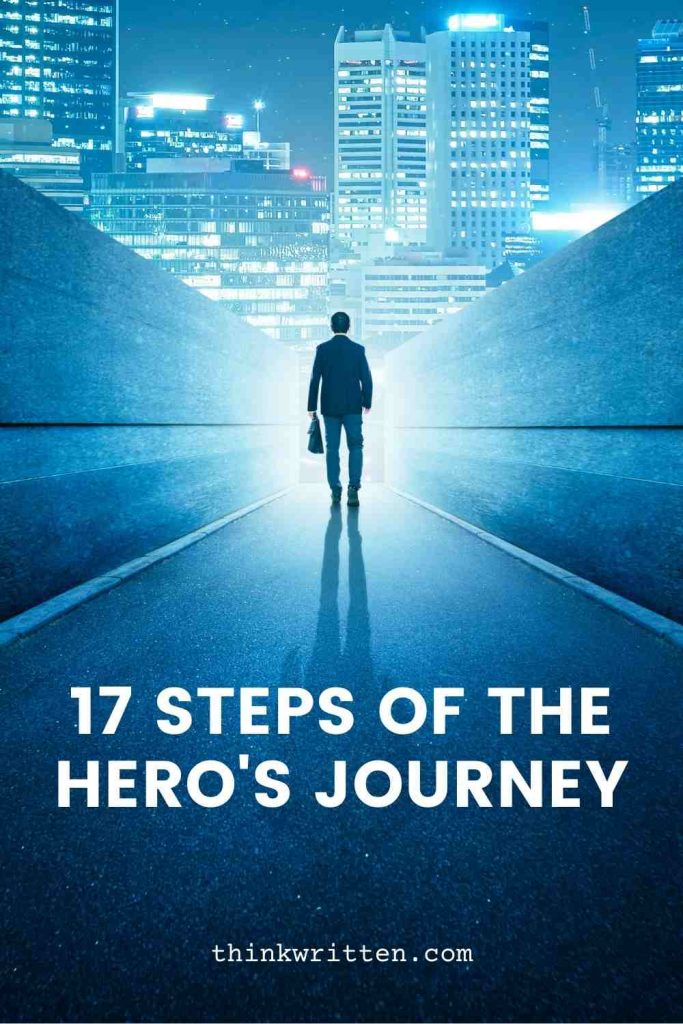
Here’s an overview of all of the 17 steps of Joseph Campbell’s Hero’s Journey:
Act One: The Departure
The Call to Adventure
Refusal of the call, supernatural aid.
- The Crossing of the First Threshold
Belly of the Whale
Act 2: The Initiation :
The Road of Trials
The meeting with the goddess, woman as the temptress, atonement with the father/abyss, the ultimate boon.
Act 3: The Return:
Refusal of the Return
The magic flight, rescue from without, the crossing of the return threshold, master of the two worlds, freedom to live.
In this post, we will cover each step of the Hero’s Journey and what it includes. If you are writing a novel , think of this as the ultimate beat sheet to help you plan and plot your novel !

To understand the 17 steps of the hero’s journey, we will share with you exactly what happens in each step and what it should include. We’ve divided the 17 steps into the three main acts: The Departure, The Initiation, and the Return.
Let’s dive on in, shall we?
The Departure

The Departure (Act 1) of the Hero’s Journey is all about your novel’s main characters and their ordinary lives. You want to show how they live before something happens that throws them into a world outside of what was normal for them.
In a nutshell, The Departure is when we see our heroes start in their current environment and set out on an adventure where they leave their comfort zone.
There are 5 steps of the Departure, each of which can help you base your chapters for your novel. Let’s look at these 5 steps in detail.
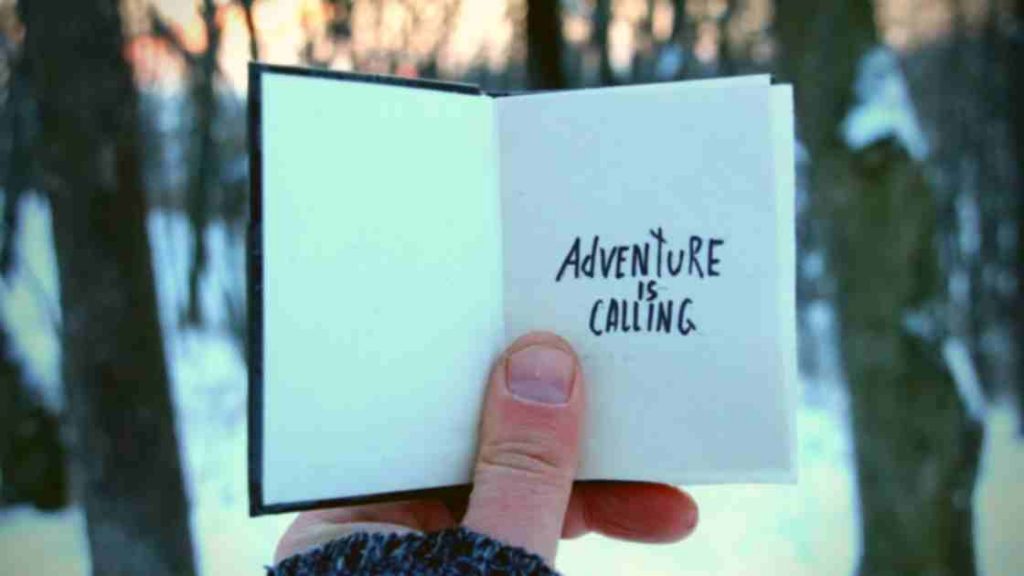
In the first 1 or 2 chapters of our book, our character is introduced and is given the call to adventure. Of course, the call to adventure is what sets our character on their journey. There is a moment when our hero realizes something isn’t right, and it’s time for them to become the hero of their own story.
The Call to Adventure should introduce your main characters and what part of life they are living before things start changing for them. You want this to be a scene that you can use to give your reader an idea of who they are and what their life is like.
The call to adventure is sometimes also called the inciting incident because it often comes from another character or situation in which our hero feels compelled to do something. This could come in the form of a problem or something that they’ve always wanted to accomplish.
Once we understand the character’s life and why they must go on their journey, we move onto the next crucial element: Refusal of the Call.

The Refusal of the Call sounds like it’s a bad thing, but in reality, it can help the hero grow and become more self-sufficient. In this step of the Departure, we see that our character isn’t sure if they are ready for such an adventure.
The refusal of the call is often used as a way for your reader to get more insight into some of your character’s weaknesses. It can also open up the character to seeing what they are missing in their life and get them a little more excited about going after it.
When writing your story, you will show your readers why your hero is reluctant to go on the journey. Why don’t they want to change? What are their fears? This step helps build your character arc, as well as builds some suspense in the story.
You also want to make sure in this step that the refusal of the call is resolved in some way. This can be through another character encouraging your hero or by realizing what they are missing out on if they don’t go on the journey.
Either way, you need to ensure this scene or chapter ends with the hero deciding to accept the challenge.
After your main character decides whether or not they want to go on this journey, we move onto Supernatural Aid.
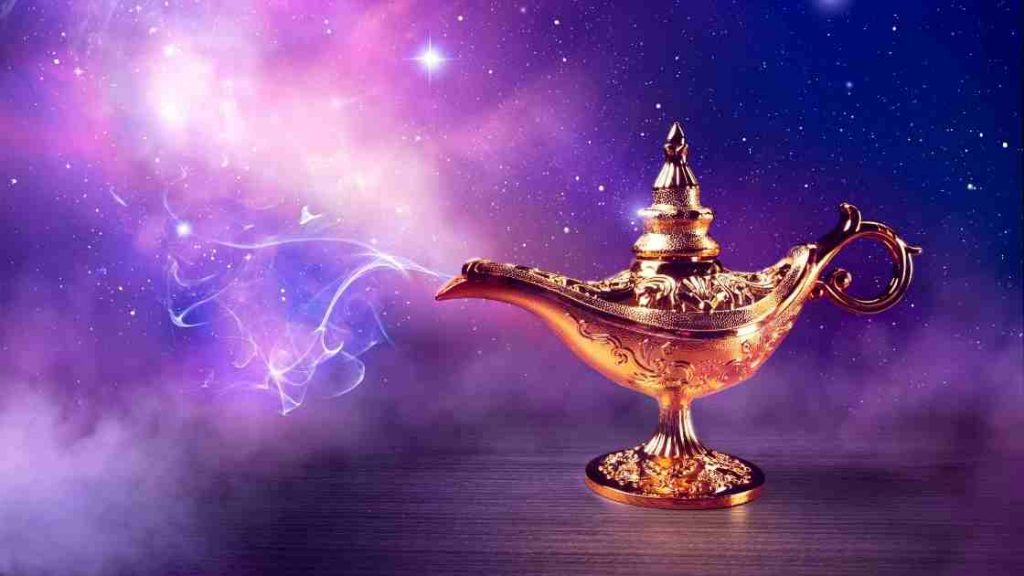
Supernatural aid is the hero’s first experience with a mentor or teacher. While we use the term supernatural here, it does not necessarily have to be some mystical being.
It could be a random stranger giving our hero advice or someone who has been to this magical place before and knows the path. The important thing is this character is someone who will help your protagonist in their journey.
Supernatural aid helps your audience understand there will be obstacles along the way. The hero will need help. You will need a strong supporting character willing to give our main character advice on how they should proceed through their journey.
In this scene, you want to show us why you chose these characters for mentors. What qualities do they possess? Do they have experience with adventures like this? Why can they help the hero, and more importantly, why do they want to help the hero?
Once this person is introduced, we are ready for the next stage of the Hero’s Journey: Crossing the First Threshold.
Crossing the First Threshold
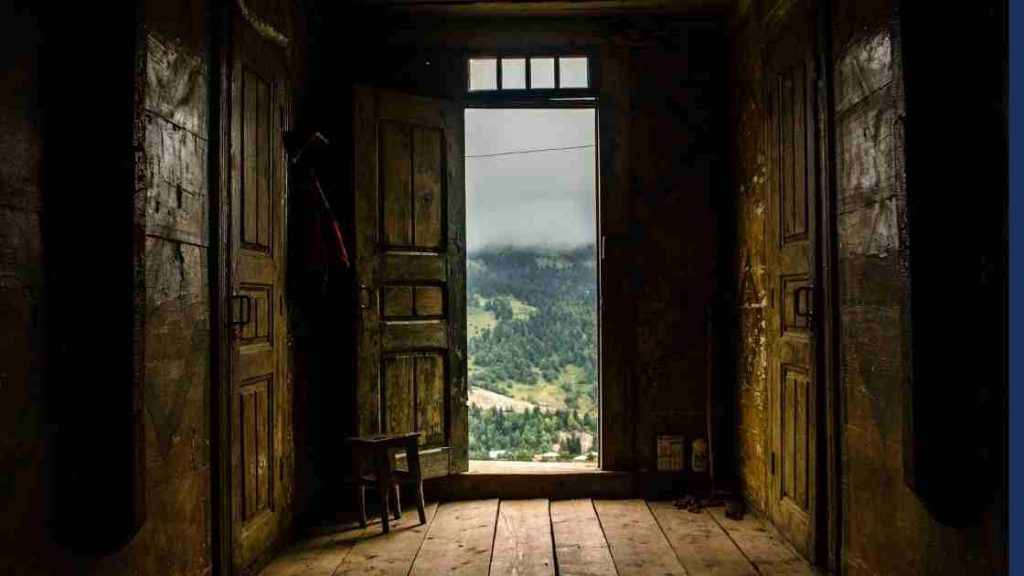
Crossing the first threshold is where your hero commits to going on the journey. They may have made some attempts at it before, but now they are fully committed and ready to go, even if that means leaving their comfort zone behind.
Your character will be doing something different than what they’ve done in the past, or perhaps this act will lead them into a dark and dangerous place.
For example, your hero may leave their home for the first time to go on this journey, or they are finally ready to go and confront someone who has been standing in their way of happiness.
In this 4th step of the Hero’s Journey, you want to show your reader why this is such a big change for the character.
You want to show your character scared and uncertain of what lies ahead for them while still being brave enough to continue on their journey! You don’t need to make this scene too long or spend time explaining every little detail; just put us in the headspace of your hero so we can understand what unknown dangers and fears are ahead.
Once our hero takes their first steps towards danger, we find ourselves in the Belly of the Whale.
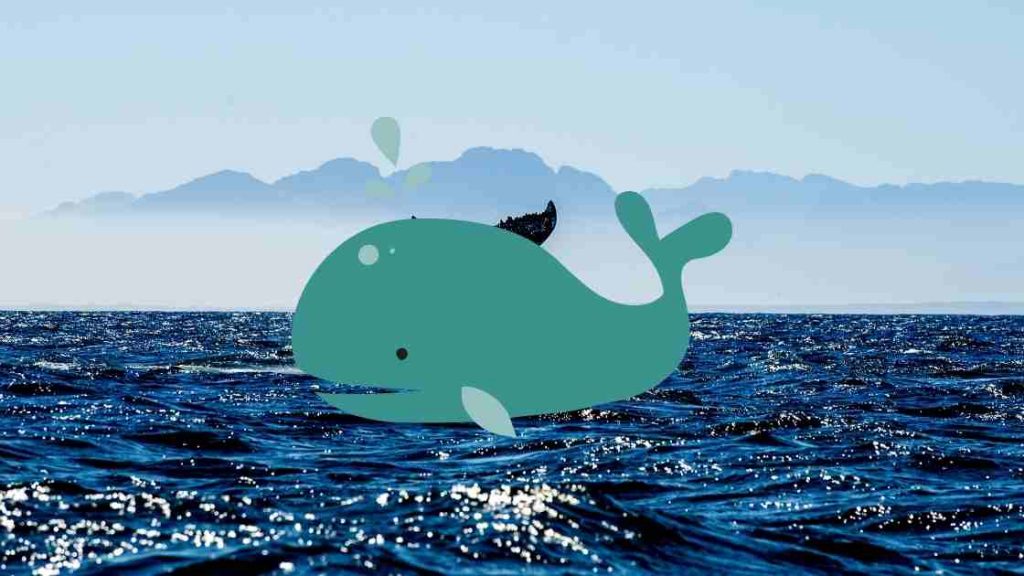
The Belly of the Whale is the last step before the hero breaks away from their normal existence and sense of self. When someone enters this stage, they are showing that they want to change.
A typical element of the Belly of the Whale Scene is displaying a small problem or threat. These problems aren’t the major conflict of the story, but it is enough of an obstacle that we see the hero absolutely cannot go back to where they used to be and must change.
In this scene, it’s common to show a “dark night of the soul.” This is where they feel like everything in their life has been turned upside down, and things seem hopeless. Yet, they must commit to making a change and continuing on their journey in this final step of the Departure stage.
Now that we’ve covered all the steps of the Departure state let’s move onto Act 2: The Initiation.
The Initiation
The second act of our story, the Initiation, is the part where things get interesting. The character is now deeper into their journey and facing new challenges that they must overcome.
Not only are we focusing on our hero’s personal development, but our protagonist’s character traits start to change. They will be showing how they’ve become different from who they were in Act One and developing the traits needed for a successful journey.

The first scene or chapter of the Initiation stage of the Hero’s Journey is The Road of Trials. The Road of Trials is where the protagonist faces a series of tests that your hero must pass to move onto the next stage.
These trials will continue until our hero has shown they are ready for whatever is waiting ahead on their journey and have discovered what lessons they needed to learn along the way.
Usually, there is a series of 3 tests, and your hero will not ace all of them immediately. Sometimes, we will revisit the person introduced as a mentor or guiding force from Act One in these scenes, as the hero will certainly need some support in going through these trials.
In this scene, you want to make sure your reader sees how the hero experiences growth and changes. You want your reader to appreciate how far our hero has come along their journey, but there are still more experiences ahead for them!
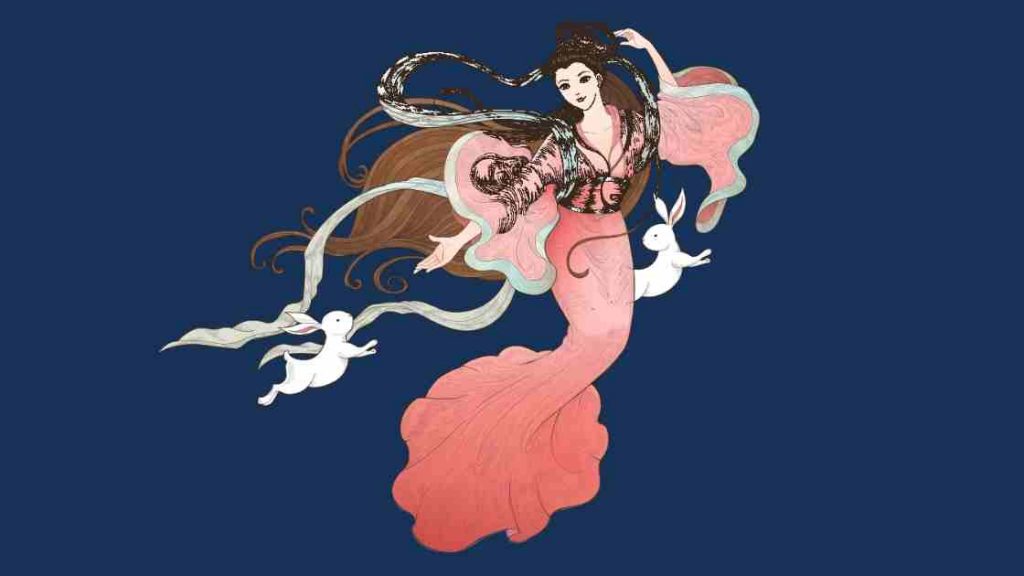
The next step of the Initiation stage is The Meeting with the Goddess/Saviour. This is where we are introduced to someone who will give our protagonist a sense of love, peace, safety, and unity.
This character is essential because they offer our protagonist something he didn’t have before and will be the support that helps them through whatever journey lies ahead. Sometimes they appear as a love interest, but not always.
The Goddess figure is often human but could also be an animal or nature spirit. They are someone who will help your hero become whole again. They are an equal opposite of your hero.
In this scene, we want our hero to feel everything is going to be okay now. They will learn that they don’t need to face their problems alone; someone here with them understands what they are going through.
Of course, this doesn’t last forever as we move into the next chapter: Woman as the Temptress.
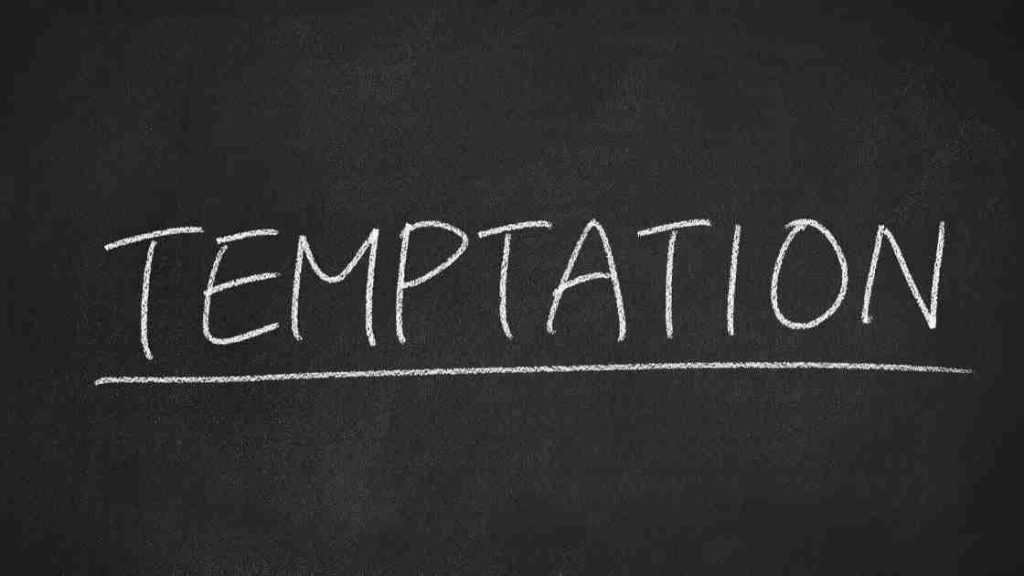
In this next step, the hero faces physical temptations that might cause them to be distracted from their quest. Again, it’s important to understand this does not mean you need to introduce a female character in this scene – the woman is only a metaphorical symbol.
Many things can tempt our heroes to stray from their path. It might be money, power, or fame. It could even be something as simple as food and drink. But, of course, these temptations are not meant actually to distract the protagonist from their path. Our hero must resist them to gain a greater reward at the end of this stage.
Throughout this scene, they may face several such temptations until our hero learns how to resist them and stay focused on what they really want.
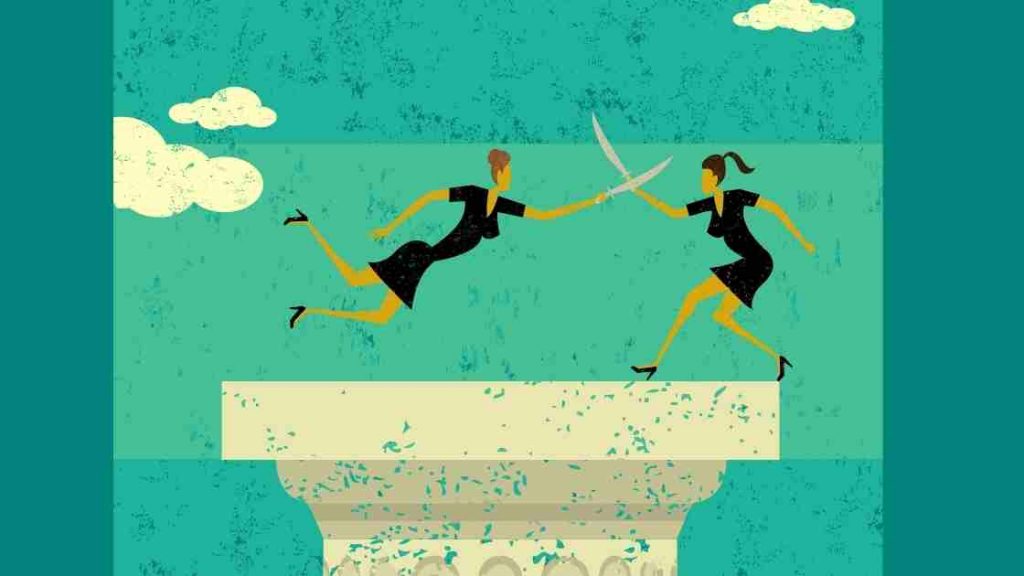
The word Atonement means “reparations for a wrong or injury,” and the Father is a symbol for an authority figure in the hero’s life. Finally, the Abyss represents death or darkness.
In this scene, the hero must confront whatever it is that holds the most power over them. This could be another character or it could even be internal conflict where the hero must come face-to-face with the dark side of their personality and be willing to embrace it.
The goal of this step in the Hero’s Journey is to make your protagonist question their entire being. Only when they confront the most powerful obstacle in their path and reconcile with it can they move forward on their journey.
As with most characters, the father does not have to be an actual father or even a male figure. The important thing is this figure is a person of power and authority over the hero.
There are many ways the hero can reconcile with the father figure – they can defeat this person, win this person’s approval, or reconcile with a part of themselves that is related to the father.
This step is important because it forces your protagonist to face their biggest fears and insecurities. It gives them the opportunity and confidence boost to overcome these obstacles once and for all.

Apotheosis is another word for “the highest point of a person’s spiritual, moral or intellectual development.” It is when the protagonist transcends their humanity and becomes something more than they were before.
In this step of The Hero’s Journey, your protagonist will undergo an important change that brings them closer to being the ideal self they set out to be at the beginning.
In this stage of the Hero’s Journey, our hero learns something new about themselves that prepares them for the hardest part of their journey. This revelation gives them the necessary knowledge to complete their quest.
This step is often referred to as “the answer.” The protagonist will usually gain this new insight from a character who embodies wisdom or spiritual power, such as their mentor figure.
Now that our character has finally grown to where they need to be to accomplish their quest, they are ready for The Ultimate Boon’s next step.

The ultimate boon is the fulfillment of the purpose of the journey. This is when the hero finally achieves what they set out to accomplish.
All of the previous steps of the journey worked to this point to help the hero finally reach their goal.
In mythology, the “boon” is often something otherworldly. It could be the fountain of youth, an ancient scroll with sacred information, or a magical potion.
There are many ways to play out this step of The Hero’s Journey, so your character’s end goal will determine what the boon is.
This step of The Hero’s Journey often includes a battle with something that opposes your protagonist, such as an enemy or villain.
Our heroes might have to face their own dark side to achieve this final prize and complete their journey successfully. This could cause them to question whether or not they even want what the boon is.
When your protagonist achieves this final goal, it marks a major change in their life. Now we are ready to proceed to Act 3: The Return.
Act 3: The Return
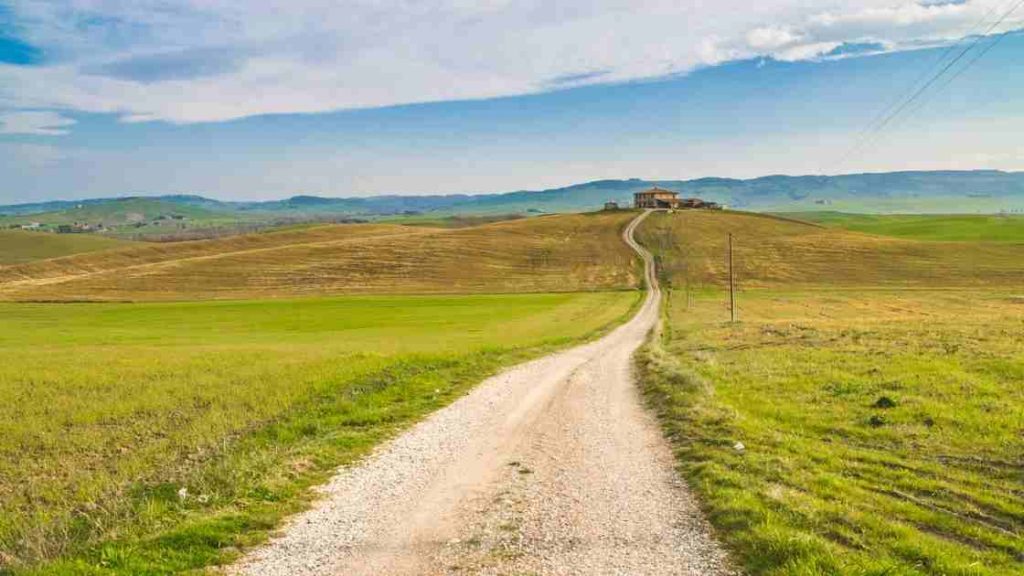
Act Three of the Hero’s Journey often moves faster than the other acts of our story. In The Return, we see how the protagonist’s newfound knowledge and achievement of their goal affect their life and world.
This step of The Hero’s Journey is crucial because it gives us a glimpse as to what our character has learned from this journey, which is the ultimate test of whether they have truly successfully achieved their quest or not.
Let’s dive into the remaining scenes of our story.
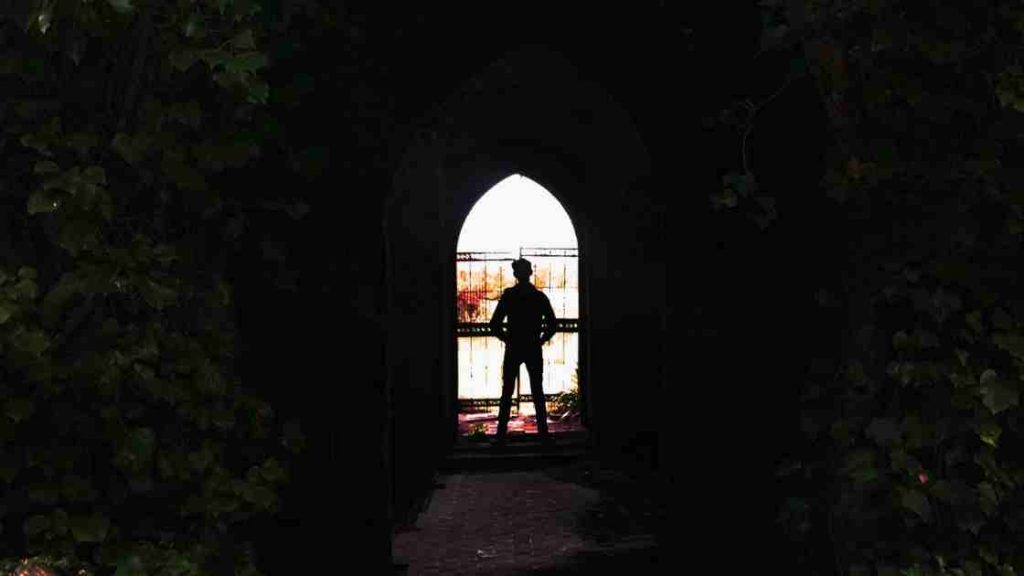
The Refusal of the Return is when our protagonist does not want to return home after achieving their goal. They may be too frightened of what awaits them, or they may not want to give up the new life and world they have found themselves in.
Just as they were hesitant to go on the adventure in the beginning, they are also hesitant to go back.
They may be concerned with how their “boon” might affect the world – such as a magic potion or secret power that could get into the wrong hands. They may worry about what consequences they may face when they go back, or they may be afraid nothing is left for them to return to.
In some cases, our hero doesn’t want to leave because they have become comfortable with their new world and who they have become.
However, to truly finish the quest, our hero must return home. This refusal of return helps build up the tension to the final resolution of the story. This is when the reader questions whether the hero will return home – and wonders with great anticipation of what might happen when it happens.
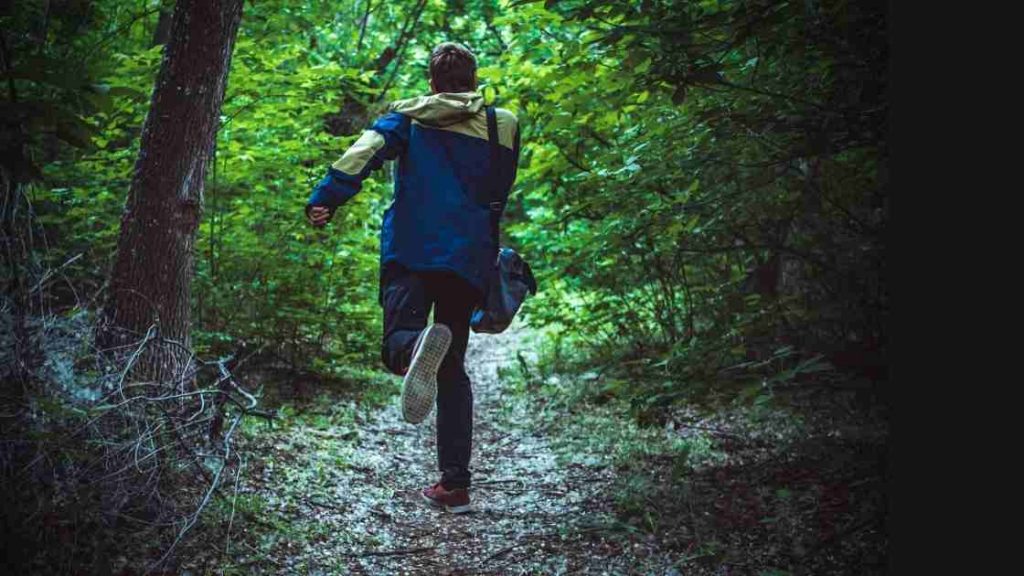
The Magic Flight is the final conflict to the story where our protagonist must escape danger, sometimes using their newfound knowledge or boon. This is a way of symbolically proving that they have truly learned from this journey and are ready to bring it back home with them.
This part of The Hero’s Journey often involves a chase scene or battle against an opposing force. However, this is the final push necessary push they need to realize they must make the journey home because it becomes apparent they cannot stay where they are.

The Rescue From Without step of the Hero’s Journey is when the protagonist is rescued from danger by an outside source.
This outside source may be an ordinary person, or it might resemble deus ex machina, or god-like intervention, where something rescues our hero from an impossible situation, such as lightning striking that saves the day for our hero.
When you are writing the rescue scene, the circumstances of the rescue must be believable. Most people do not like the deus ex machina in writing simply because it’s too easy.
Those of us who have lived life long enough all know that a magic fairy godmother isn’t going to swoop us in, wave her wand and make all our problems disappear.
After being rescued, the hero truly has no other choice except to return home.

The Crossing of the Return Threshold is when our protagonist finally returns home after completing their adventure and achieving their goal.
This is the part of The Hero’s Journey where we see what they have learned from this journey and how it affects them.
In this story scene, you will want to answer the following questions: How has the hero changed from their journey? How is their old world different from when they left? How do they acclimate to being back home? Finally, how do others react to their return?

This is the part of The Hero’s Journey where our protagonist has reached their full potential. They have overcome their fears and grown in ways they could never have imagined.
They are a new person and have been forever changed by what they’ve experienced. Yet, it allows them to go back into society with heightened wisdom, power, skills, or resources that will help others in need when called upon again.
In this scene, we see the hero apply their knowledge and share it with the world.

After our hero has conquered all of their fears and has put their wisdom to good use, the hero finally has the freedom to do anything they want.
This is the resolution of our story – we see our heroes accomplish their “happily ever after.” Their fears or concerns no longer control them, and nothing exists between them and what they want.
More often than not, this closing chapter of the story gives the reader some closure. We want some type of affirmation that the story is truly complete. We get a glimpse of what our protagonist will do with their life now that they are free to live it.
If you’re looking for a story structure that is proven and effective, the Hero’s Journey might be perfect for you. With 17 stages of development, it will help you create an engaging plot with your readers and develop strong characters .
And of course, while the Hero’s Journey is the classic beat sheet for writers, remember you don’t always have to dedicate one chapter to each step. Sometimes you can combine 2-3 steps in one scene, while other steps might take several chapters to cover.
The important thing is you now know the Hero’s Journey! We hope this is helpful for you – whether you are writing your own novel or studying the Hero’s Journey arc in literature. Most of all, we hope that by breaking down each step of the Hero’s Journey, you can better understand all of it.
Do you have any thoughts or questions on the Hero’s Journey? We’d love to hear from you in the comments section below!
Chelle Stein wrote her first embarrassingly bad novel at the age of 14 and hasn't stopped writing since. As the founder of ThinkWritten, she enjoys encouraging writers and creatives of all types.
Similar Posts
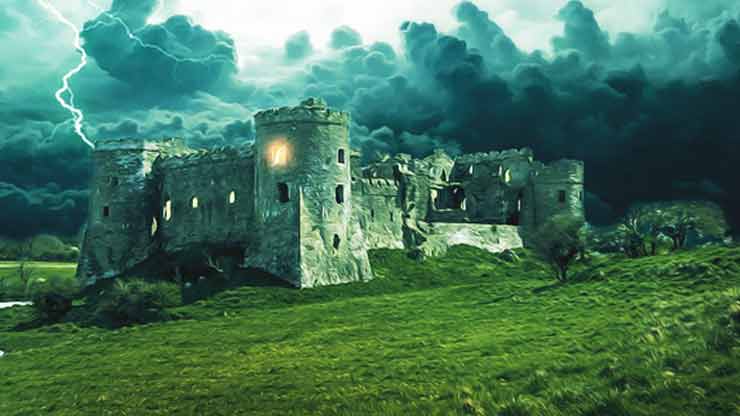
5 Signs of a Strong Novel Plot
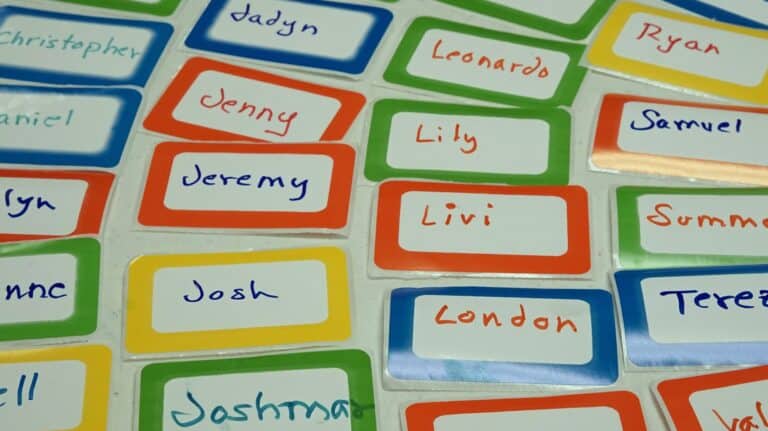
How to Name Your Characters

How to Write a Novel: Writing a Book in 4 Steps

160+ Character Development Questions & Free Printable Worksheet

How to Write Dialogue: 6 Tips for Writing Powerful Dialogue

How to Avoid Over Planning Your Novel
So if you’re writing an epic fantasy that will be a series, are these 17 steps strung out across the entire series, or redone in each book?
Thank you for such a helpful article. This has helped me fill in a glaring hole in my novel outline and shown me what was missing. I’m really grateful for this advice.
Glad it was helpful for you Laura!
Leave a Reply Cancel reply
Your email address will not be published. Required fields are marked *
Save my name, email, and website in this browser for the next time I comment.

IMAGES
VIDEO
COMMENTS
On the journey Chihiro remembers Haku's real name, this free's him from being a dragon spirit, and allows him to cancel his working contract with Zeniba. His happiness and freedom is Chihiro's reward because she loves him. Study with Quizlet and memorize flashcards containing terms like 1. Ordinary World, 2. Call to Adventure, 3.
Study with Quizlet and memorize flashcards containing terms like 1. Ordinary World, 2. Call to Adventure, 3. Refusal of the Call and more.
Chihiro: Guys, don't take that food! We're gonna get in trouble! Chihiro's Father: Don't worry, you've got Daddy with you. He's got credit cards and cash! (Hayao Miyazaki, Spirited Away) When Chihiro come's back, her parents have turned to pigs and spirits are gliding around. 3. Refusal to the Call - Chihiro is confused by the events and tries ...
This is the original world of the hero, which "suffers from a symbolic deficiency." The hero is lacking something, or something is taken from them. The journey has yet to start. Before our Hero discovers a strange new world, we must first understand the status quo: their ordinary, mundane reality. 1.
Resurrection. In an action story, the final battle awaits. Here, Chihiro figures out the structure of the world she's in, and why Haku constantly helps her. And, that climatic scene of "the ...
This is the pattern that the three-act structure also follows. It captures a hero's transformation throughout the journey. Now, let's plot the three-act structure with the example of one of my favourite films, Spirited Away, an animated movie produced by Studio Ghibli and directed by Hayao Miyazaki. It was released in 2001 and won the Academy ...
Spirited Away is a movie universally loved. In this video I break down the plot and how it was constructed. I also take a look at the symbolism and psycholog...
Spirited Away (Japanese: 千と千尋の神隠し, Hepburn: Sen to Chihiro no Kamikakushi, lit. 'Sen and Chihiro's Spiriting Away') is a 2001 Japanese animated fantasy film written and directed by Hayao Miyazaki. Spirited Away tells the story of Chihiro "Sen" Ogino, a ten-year-old girl who, while moving to a new neighborhood, inadvertently enters the world of kami (spirits of Japanese Shinto ...
Spirited Away is a coming-of-age film that explores the fears and anxieties of its young protagonist, Chihiro.; The movie focuses on Chihiro's journey to save her parents and how it represents her ...
Quizlet has study tools to help you learn anything. Improve your grades and reach your goals with flashcards, practice tests and expert-written solutions today. Flashcards. 1 / 9 Spirited Away Hero's Journey. Log in. Sign up. Get a hint. 1. Ordinary World. Click the card to flip.
Spirited Away is about an individual — most likely in their 40s — who is going through a process of self-discovery and becoming whole. Every character represents a mental abstraction.
No film captures that more than Spirited Away, his 2001 magnum opus that uses a young girl's existential journey through a land of spirits as an examination of finding yourself in your youth. While the film as a whole is a stirring pursuit of that idea, there's one scene that alone unlocks the secret to Spirited Away —and perhaps Miyazaki ...
Nagging Yubaba to give her a job. Chihiro is back in the human world with her parents. Dad takes a wrong turn while going to their new house and comes across an abandoned amusement park. They walk through the b.uilding and over a river to an abandoned town. The parents find food and start eating and then turn into pigs.
Chihiro's Journey: Analyzing "Spirited Away". In July 2012, Roger wrote about viewing " Spirited Away " for a third time and how he was then " struck by a quality between generosity and love. " It was during that viewing he " began to focus on the elements in the picture that didn't need to be there.
By: Madeleine Lorie. The movie begins with Chihiro sulking in the car on the way to her new home. She complains about having to leave her friends and old life behind. She is nostalgic and unenthusiastic. On their way to the new home, the family gets lost. They come across an old abandoned theme park and decide to explore.
This film depicts Chihiro's struggle to save her father and mother, who a witch cursed to become pigs after their family mistakenly entered the world of spirits. The main character Chihiro is a ...
Here's an overview of all of the 17 steps of Joseph Campbell's Hero's Journey: Act One: The Departure. The Call to Adventure. Refusal of the Call. Supernatural Aid. The Crossing of the First Threshold. Belly of the Whale. Act 2: The Initiation: The Road of Trials.
HERO'S JOURNEY: SPIRITED AWAY By: Lacey Reed THE BEGINNING OF OUR JOURNEY AN UNUSUAL BIRTH/ EARLY CHILDHOOD Chihiro in the car moving to a house The Call to Adventure go into a door, that leads to a spirit world. CROSSING THE THRESHOLD Crossing the bridge with Haku into the THE
Joseph Campbell's Hero's Journey, while based on his study of mythology around the world, can be applied to more than just myth. In fact, it's applied to film frequently. One of the clearest examples of Campbell's Hero's Journey is none other than George Lucas's film Star Wars: A New Hope (1977). To this film we now turn.